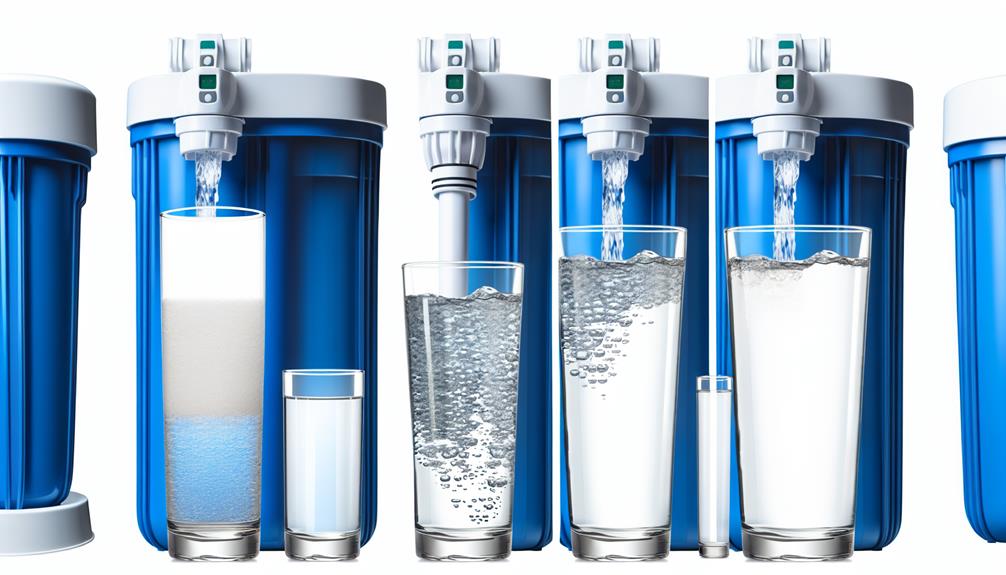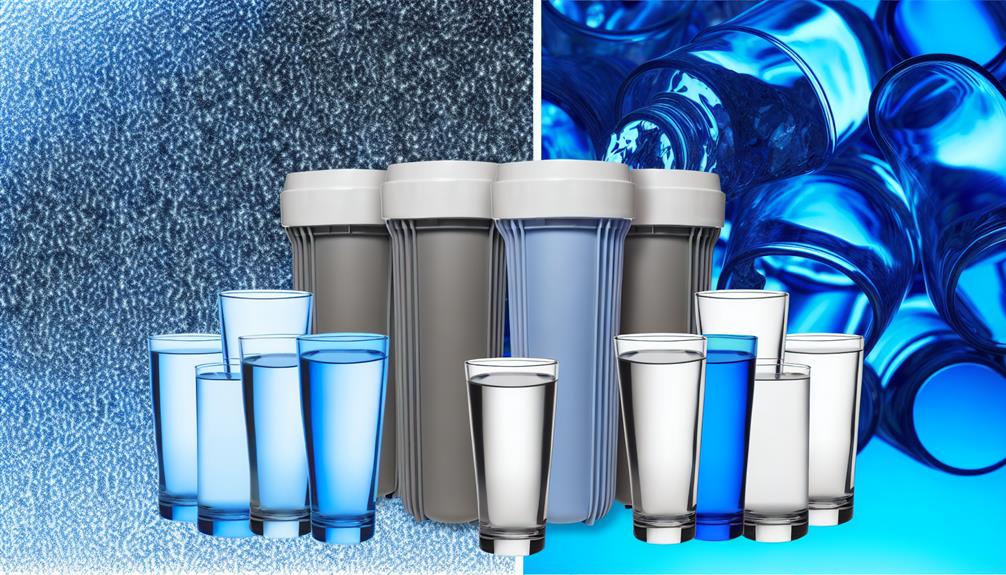Is it true that investing in a whole house water filtration system can actually save you money in the long run?
You're about to explore the financial landscape of securing clean water for your entire home. From the upfront costs of sediment filters to the long-term benefits of multi-stage systems, you'll need to weigh initial expenses against enduring value.
As you consider carbon block systems and reverse osmosis units, keep in mind the hidden savings in maintenance and health benefits. And don't overlook UV purification—its cost analysis might surprise you.
Stay with us as we unpack the complexities of each option, equipping you with the insights to make an informed decision that balances cost with quality.
Sediment Filters: Initial Expenses
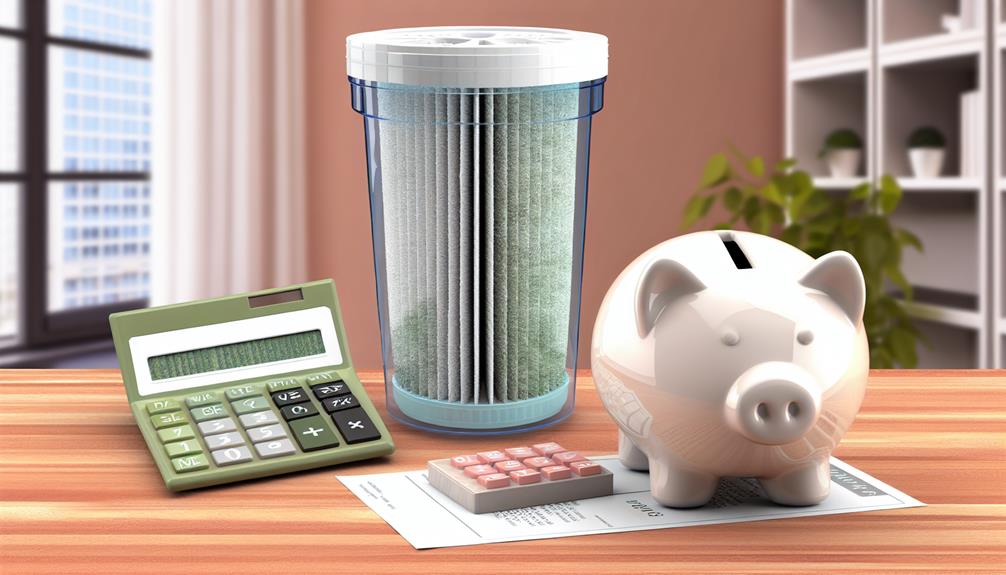
When considering the installation of sediment filters in your home, it's essential to analyze the upfront costs, which include the purchase price of the filter system and the initial setup expenses. The market offers a range of sediment filters, with costs varying according to capacity, material quality, and brand reputation.
You'll need to assess the filter maintenance requirements, as these will impact long-term expenses. Higher-quality filters with lower maintenance needs may warrant a higher initial investment but can prove cost-effective over time.
Installation requirements for sediment filters are multifaceted, involving both the complexity of the system and the labor involved in setting it up. It's critical to account for the potential need for professional installation, which ensures correct setup and functionality but also adds to the initial outlay. DIY installation may reduce costs, but it requires a precise understanding of the system and plumbing.
To accurately determine the financial implications, you must consider both the filter unit's price and the installation costs, whether professional or DIY. Meticulous analysis of these expenses will facilitate a well-informed decision, ensuring that the sediment filter you choose aligns with both your water quality needs and your budgetary constraints.
Carbon Block Systems: Pricing Overview
Transitioning from sediment filters, let's examine the pricing overview of carbon block systems, which are another effective option for whole house water filtration. When considering a carbon block system, you're looking at a multifaceted investment. The cost isn't just about the initial purchase; it's also about the long-term implications including filter lifespan and maintenance costs.
Here's a breakdown to consider:
- Upfront Cost: Carbon block systems typically range from several hundred to over a thousand dollars, depending on capacity and brand.
- Filter Lifespan: The average lifespan of a carbon block filter is about 6 to 12 months, but this can vary based on water usage and quality.
- Replacement Filters: Regular replacement is crucial for maintaining performance, adding to the total cost of ownership.
- Maintenance Costs: Apart from filter replacement, maintenance is relatively low; however, neglect can lead to system inefficiency and unexpected expenses.
Be mindful of these financial commitments when you're budgeting for a whole house water filtration system. The technical specifications of each carbon block system will directly impact these costs, so it's essential to analyze your water filtration needs against the performance and capacity of available systems to ensure you're making a wise investment.
Reverse Osmosis Units: Financial Considerations
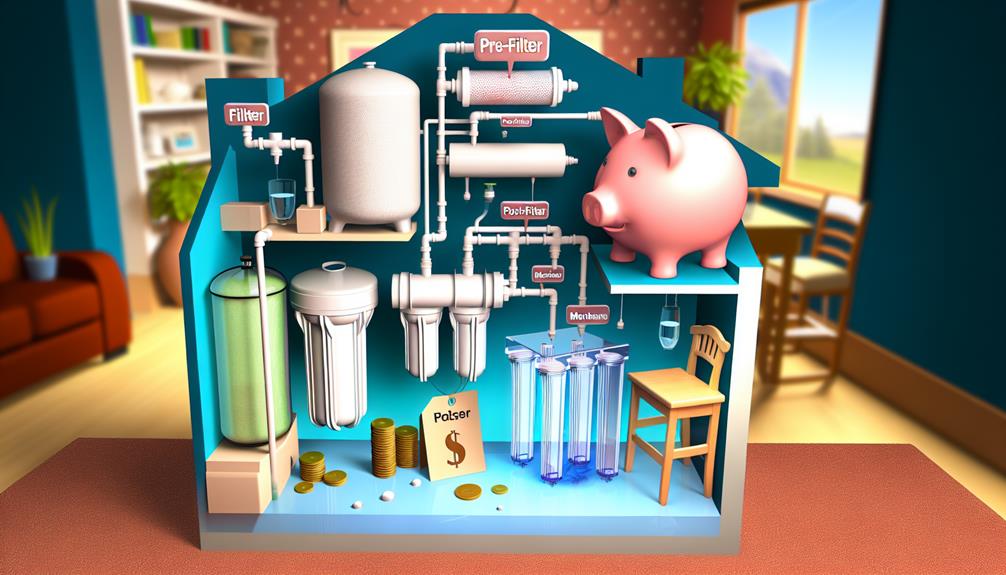
Having explored the costs associated with carbon block systems, let's now turn our attention to the financial considerations of reverse osmosis units for whole house water filtration.
You need to understand that the initial outlay for a reverse osmosis system is typically higher than for basic filtration solutions. This is due to the complex technology that's essential for the removal of a vast array of contaminants.
When assessing system longevity, reverse osmosis units have a robust lifespan, often functioning efficiently for several years before requiring significant intervention. However, this is contingent upon regular maintenance, which includes periodic replacement of filters and membranes.
Maintenance frequency is a critical factor in overall cost projection; neglecting this aspect can lead to premature system failure and unexpected expenses.
Moreover, the efficiency of reverse osmosis units typically results in reduced long-term costs related to water usage and potential health risks from contaminants. It's imperative to weigh these savings against the upfront investment and ongoing maintenance expenses to gauge the true financial impact.
UV Purification: Cost Analysis
As you consider UV purification for your home's water filtration, it's crucial to analyze both the initial investment and the long-term operational costs of these systems. The microbial effectiveness of UV purification is remarkable, offering peace of mind by neutralizing harmful microorganisms without the use of chemicals. However, to maintain this level of protection, you need to be aware of the maintenance frequency and associated expenses.
Here are key cost considerations for UV purification systems:
- Upfront Costs: These include the price of the UV purification unit and installation fees. Prices vary depending on system capacity and brand, but expect to invest several hundred dollars.
- Replacement Lamps: UV lamps don't last forever. Typically, you'll need to replace them annually, incurring a recurring cost.
- Energy Consumption: UV systems require constant power to operate effectively. Assess the system's wattage to estimate the impact on your electricity bill.
- Maintenance: Apart from lamp replacement, the quartz sleeve housing the lamp also needs periodic cleaning, and occasionally, replacement to ensure optimal microbial effectiveness.
Multi-Stage Filtration: Investment Summary
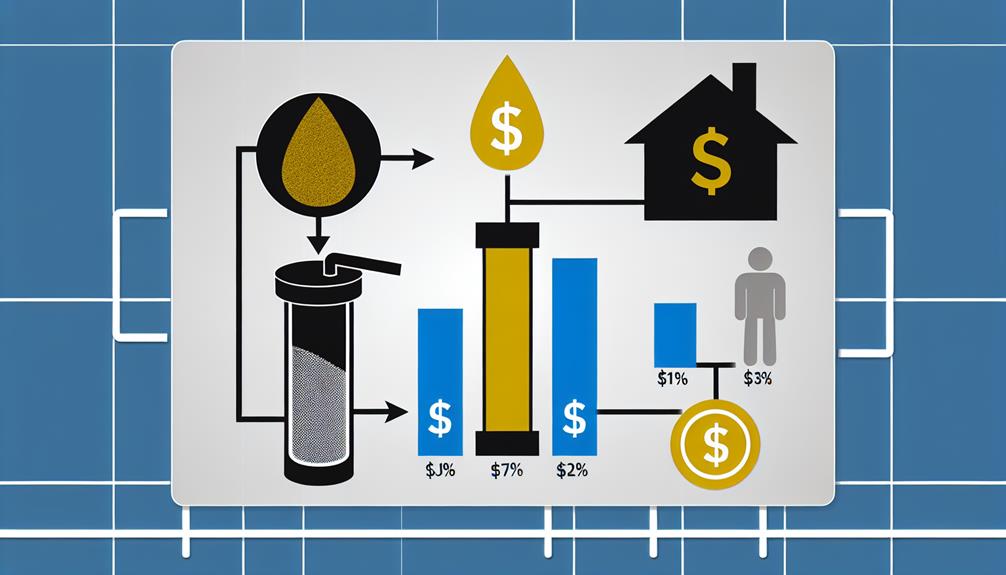
While UV purification targets microorganisms, multi-stage filtration systems offer a comprehensive solution by removing a wide array of contaminants from your home's water supply, necessitating a detailed investment analysis. You'll find that the initial outlay for a multi-stage system can be significant, yet it's essential to evaluate this in light of the filter lifespan and maintenance frequency.
Multi-stage filters employ a series of mechanisms, each with a distinct purpose, to ensure a thorough purification process. The sediment filter, often the first stage, may need replacement every 2-3 months, depending on water quality and usage. The carbon filter, another critical component, usually has a longer lifespan—typically 6-12 months. The longevity of these filters directly influences the overall cost-effectiveness of the system.
Moreover, certain systems include specialized media or filters, such as those for softening water or removing specific chemicals, which might have differing lifespans. Maintenance frequency is also a cost factor; more complex systems could require professional servicing, adding to the long-term investment.
To summarize, you must weigh the upfront cost against the filter lifespan and maintenance requirements. A precise calculation will reveal the true value of a multi-stage filtration system for your household. Consider the financial commitment with a view toward long-term benefits and water quality assurance.
Conclusion
In conclusion, you've explored a range of whole-house water filtration options, each with varying costs.
Sediment filters offer a cost-effective entry point, while carbon block systems balance price and performance.
Reverse osmosis units, although pricier, promise exceptional purity.
UV purification stands out for its effectiveness against pathogens, and multi-stage systems represent a comprehensive, albeit significant, investment.
Carefully analyze your specific water quality needs and budget to determine the most suitable and economically viable solution for your home.
